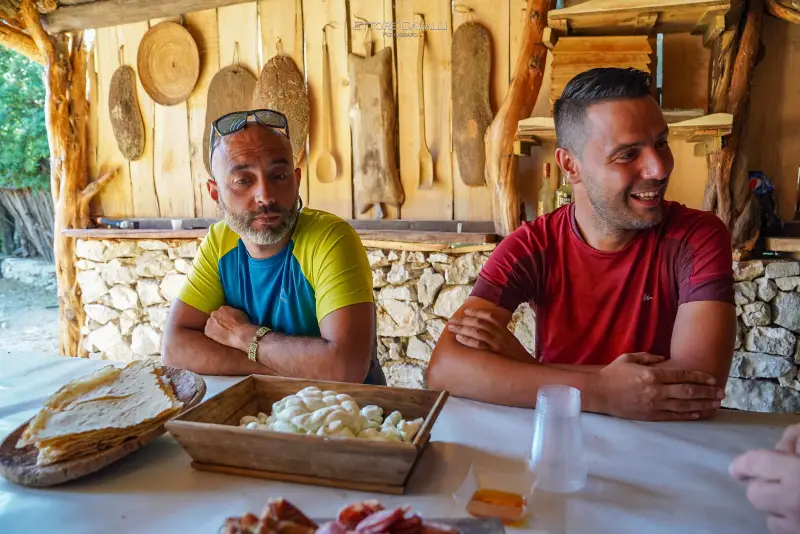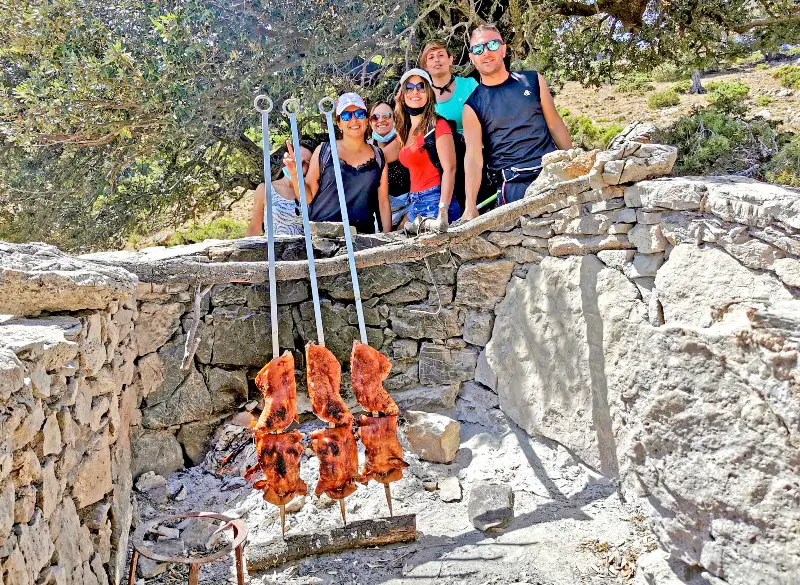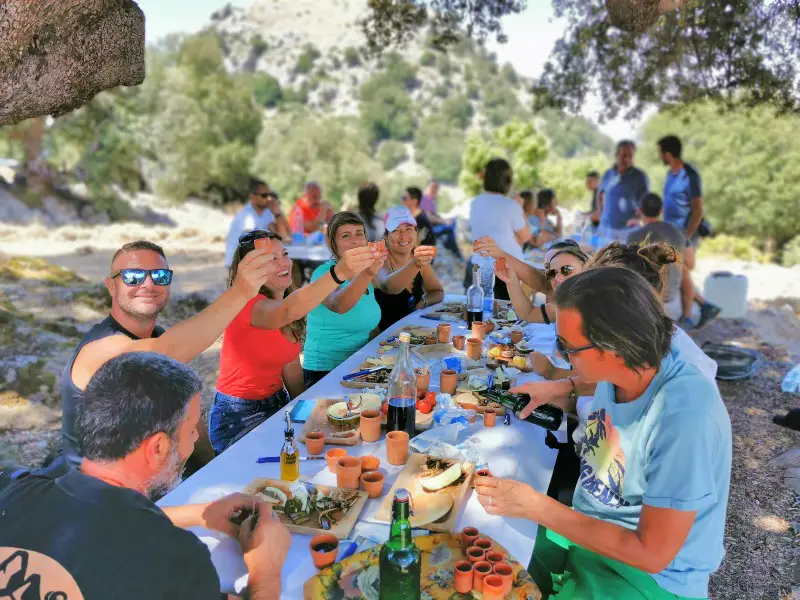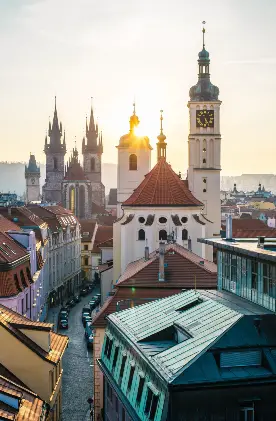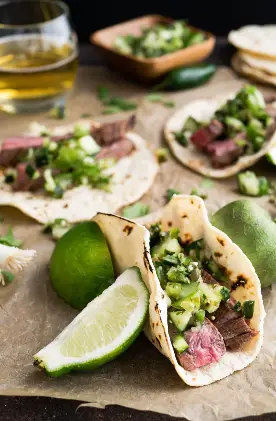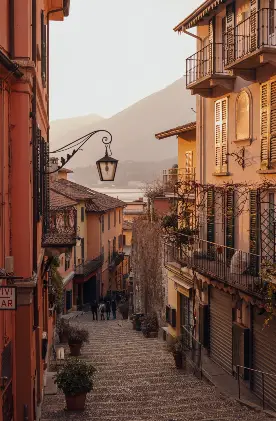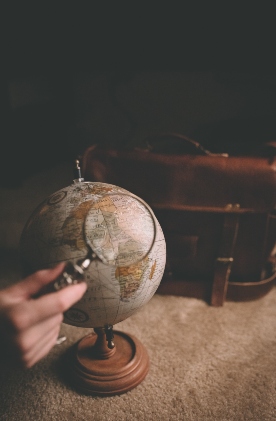Sardinia is home to one of the five famous Blue Zones – magical corners of the planet where people live longer than anywhere else. The other four can be found in Icaria (Greece), Loma Linda (California), Nicoya (Costa Rica) and Okinawa (Japan). The secret to these healthy hotspots involve a number of different elements such as diet, lifestyle and weather. In this article, we dive into the factors that make Sardinia such a wonderful place for well-being.
It’s hard to believe that the locals of Sardinia – where copious amounts of bread, cheese, pasta and wine are consumed – outlive everyone but the data doesn’t lie. Although the entire island is considered to be a Blue Zone, there are specific areas where people have a greater chance of reaching the age of 100: Barbagia, Ogliastra and Seulo. In some communes there are 10 times more centenarians per capita than the US – an incredible fact!
According to various studies, men in particular have an exceptionally high life expectancy in the Blue Zones of Sardinia. Most live well into their 80s and 90s while some crack the 100 mark. Travelers to Sardinia can certainly take inspiration from how these communities live but it’s important to remember that genetics also play a major role. And that is something which can’t be incorporated into your own lifestyle back home.
Another thing outside of your control is the weather. Sardinia is drenched in sun pretty much all year round. The north boasts approximately 290 days of sunshine annually and the south exceeds that at roughly 300 days. It’s not uncommon for the summer months to have 30 consecutive days of clear skies. You don’t need to be a doctor or nutritionist to appreciate how a consistently sunny forecast can boost your physical and mental health.
More importantly, many residents of Sardinia are culturally isolated and have maintained a traditional way of life. They still live in villages where they harvest and hunt food together, spend lots of time with family and friends, and share in rich cultural and religious traditions like going to church regularly. Everyday life is characterized by simplicity. The stresses of city-life or globalization are a foreign concept to them – and isn’t that great?!
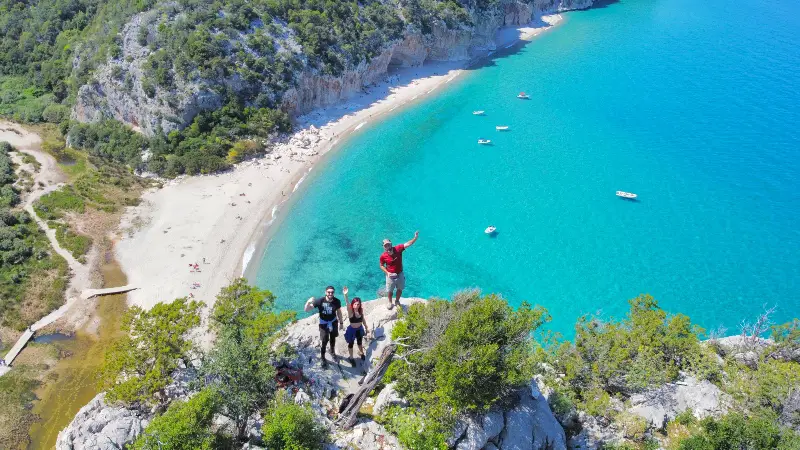
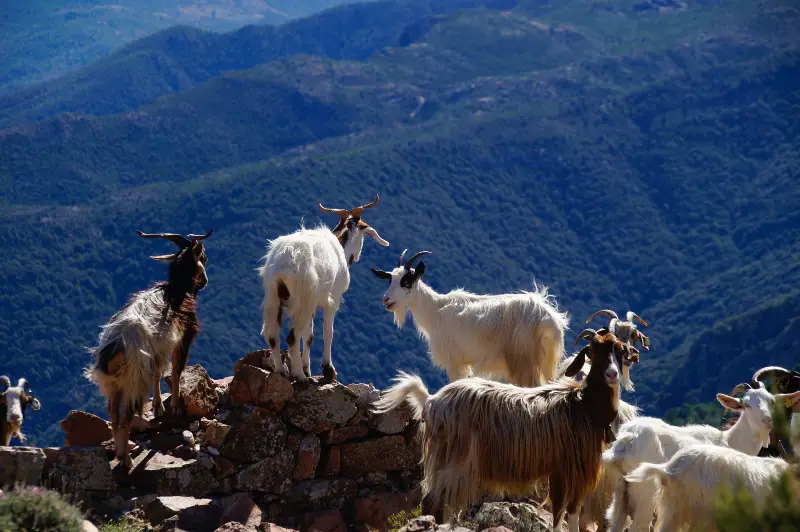
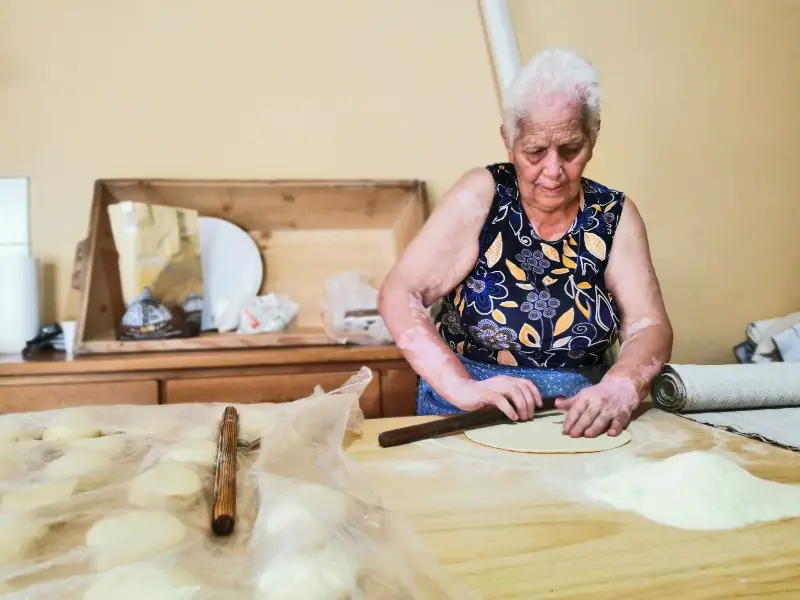
The Sardinian Diet Helps to Promote Longevity
Diet is the most crucial component contributing to the longevity of the Blue Zone residents of Sardinia. Whole foods such as fresh fruit and vegetables, free range eggs and meat, and whole grain pastas are always preferred over processed ingredients. These foods are high in antioxidants which help to protect cells from damage, and anti-inflammatory compounds, which help reduce the risk of heart problems and even cancer.
The Sardinian diet limits the intake of red and white meats by introducing fish into many dishes. Wine often accompanies meals as well. Fish and wine are rich in heart-healthy omega-3 fatty acids and antioxidants. On top of that, locals eat small portions of meat and cheese, which give them the right levels of protein. When you combine this balanced diet with regular exercise, you have yourself the formula for a healthy body and mind.
Several of the Blue Zone regions of Sardinia are located on hilltops or near mountains, and locals living there walk five miles a day or more just to go about their business. Walking provides huge cardiovascular benefits in addition to enhancing muscle and bone metabolism. It’s also less harsh on your joints than running. Whether the Sardinian inhabitants are walking uphill to their homes or working their farms, exercise is just part of life here.
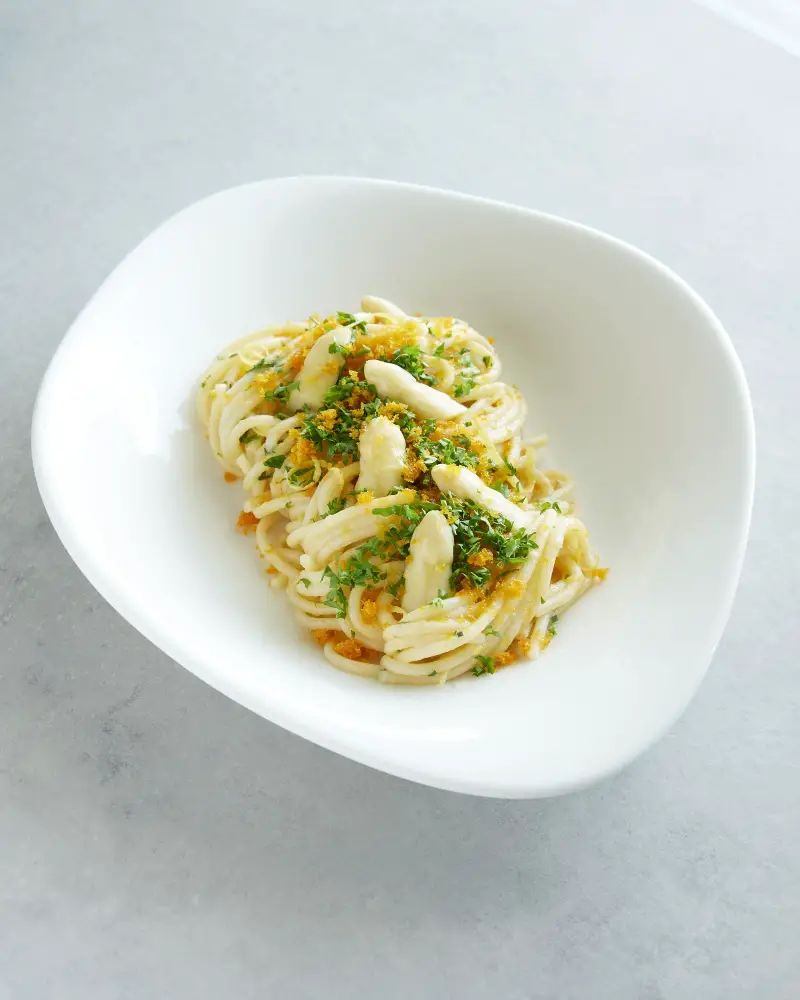
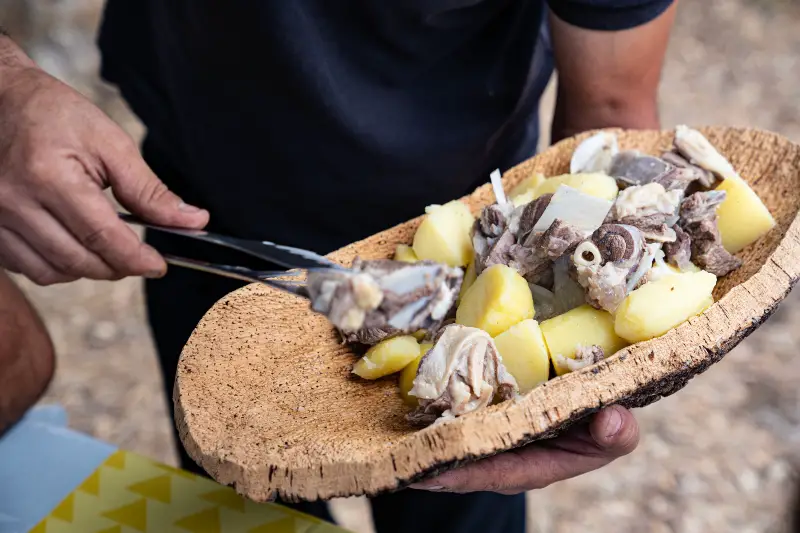
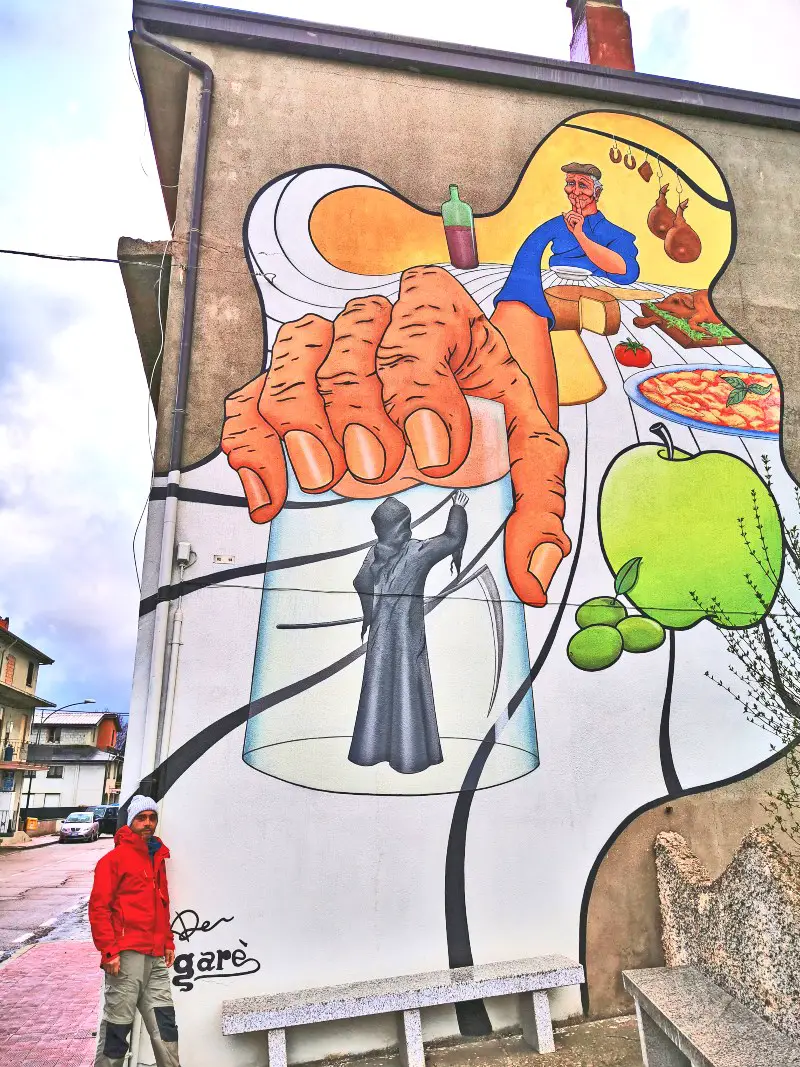
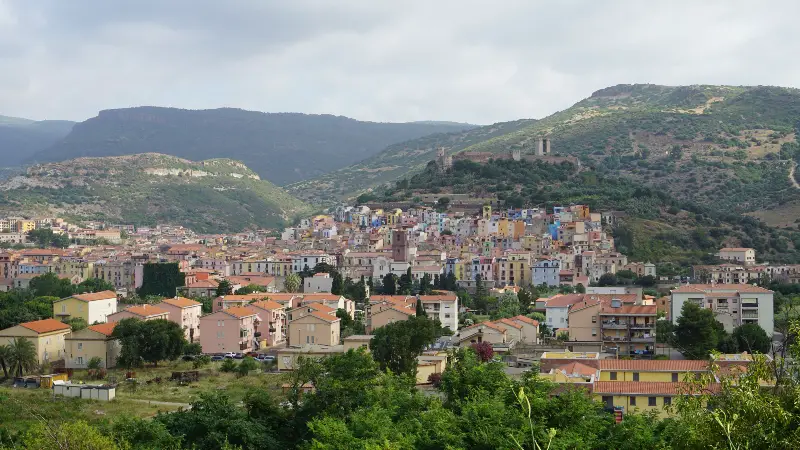
Foods of the Sardinia Blue Zone – Best & Most Bizarre
Visiting Sardinia is like immersing yourself in a living history book. Rituals have been passed down from generation to generation, and many of the customs surrounding food haven’t changed for centuries. Imagine seeing local artisans making cheese the same way it was produced 200 years ago, or jumping onboard a family-run fishing boat to catch fresh seafood the same way it was done by the fisherman’s great-great grandfather.
The people of Sardinia are connected to their roots and this helps the food remain classic through some of the most ancient techniques on the planet. For example, a type of flatbread called “Pane Carasau” is believed to have origins as far back as 1000 BC. It’s a thin, crispy bread that is made from durum wheat flour, salt, yeast and water. Pane Carasau has a long shelf-life, historically eaten by shepherds when they were traversing the mountains.
Most Sardinians enjoy the flatbread with a good dose of cheese, tomato and olive oil. Pane Carasau is better for you than white bread because it’s low in glucose (as opposed to other breads) and the durum wheat flour is high in fiber, protein and complex carbohydrates. It makes for the perfect entrée snack by dipping portions of the bread into olive oil – with the health advantages of olive oil being widely understood in the modern age.
Furthermore, sheep’s milk and cheese are staples on the island. These products contain fatty acids called CLA which help reduce the risk of chronic diseases linked to the heart. Barbagia cheese is one of the best, named after the Barbagia region where it originates, and it’s a popular delicacy throughout Sardinia. It’s a semi-hard cheese that is aged for a minimum of three months and is known for its nutty, slightly sweet taste.
The cheese is recognized by the EU as a protected food because it can only be produced by traditional methods. Staying in the same geographical area, Barbagia meat is another hit among locals: a pig gets cooked on a spit over an open fire where the smoky flavors penetrate the meat. The pork is then seasoned with herbs and spices to add extra kick into each bite. The tenderness of the meat has you licking your lips for more!
Coming to the most bizarre foods of Sardinia, travelers are spoilt for choice. Casu Marzu – a cheese made from sheep’s milk – is the most famous of them all, featured in countless travel shows and blogs. This cheese is kept outside to ferment and during the process it becomes infested with live insect larvae. The larvae break down the cheeses’ fats, and create a soft and intensely pungent taste. It’s best served with bread or pasta dishes.
High in protein and healthy fats, Casu Marzu is more than just a weird and wacky delicacy – it’s beneficial to your health which is why Sardinians can’t get enough of it. Another bizarre food to try, this time on the pasta-front, is Fregula. The pasta is rolled into small balls from semolina flour and water. Although that may sound boring, the balls mix superbly with tomato and sausage sauce, creating a hearty meal full of protein and carbs.
The final strange food to highlight is Mirto. It’s a liqueur made from myrtle berries, considered to have medicinal properties that boost liver function and reduce inflammation. Locals sip the drink as an after-dinner digestif. All in all, Sardinia is known for its delicious and sometimes bizarre traditional foods that are believed to promote health and well-being. And who would argue with them when Sardinia is an official Blue Zone territory!
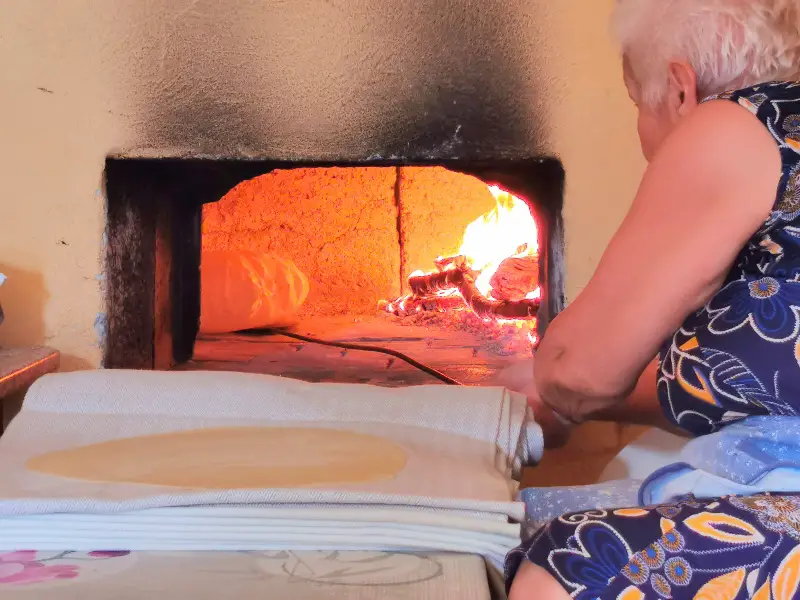
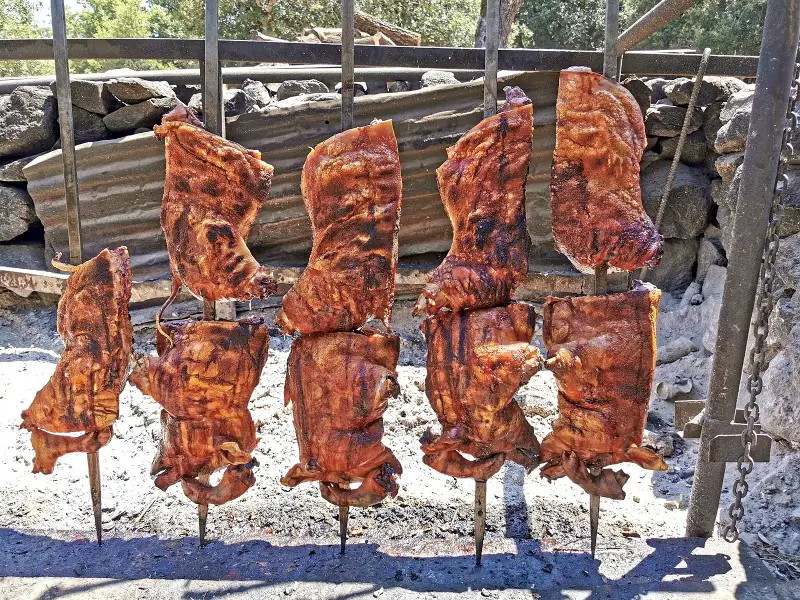
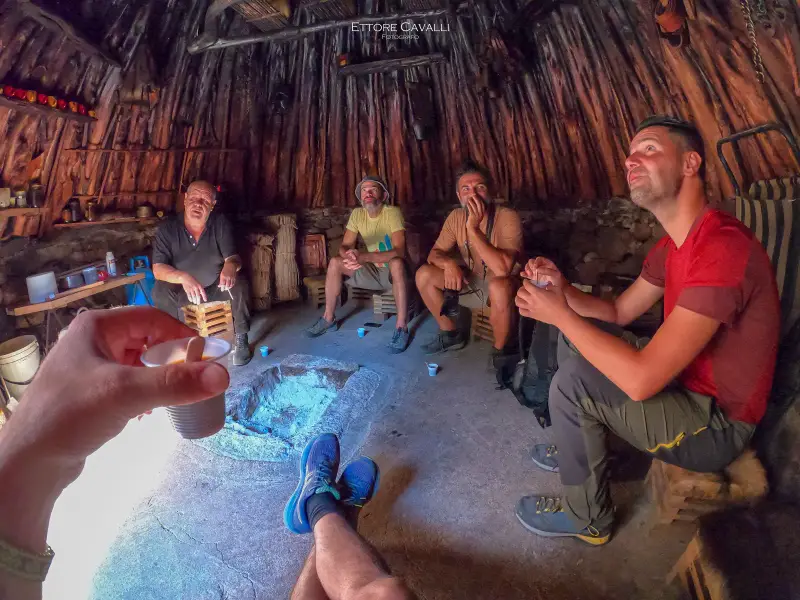
Gastronomy Tours in Sardinia with Orosei Adventours
One of the best ways to experience Sardinia’s culinary delights, and in turn discover how it was designated a Blue Zone, is through a food and wine tour. Whether you want to share an intimate lunch with a shepherd, wine and dine in a picturesque vineyard, or join a fun cheese-making workshop – the team at Orosei Adventours have something you will love. This 5-star rated tour agency not only offers excursions in Orosei but all over Sardinia.
By partaking in the Hands On Pasta-Workshop and Tour in Orosei or the Orgosolo Experience with Shepherd’s Lunch, you will witness the simple customs and traditions that led Sardinian residents to becoming some of the world’s most long-living people. While not all of the practices may be easily adaptable to different cultures, these tours still serve as an inspiration and motivation to make healthier choices in our lives back home.
To sum up, the Blue Zone of Sardinia provides valuable knowledge on how to live a healthy life through diet habits. By embracing elements of the Sardinian way of life such as a nutritious diet, regular exercise, low stress, a strong sense of community, and moderate alcohol consumption, we can increase our chances of living to 90, 100 and beyond. And what’s a better way to gain this insight than by experiencing it firsthand through travel!

